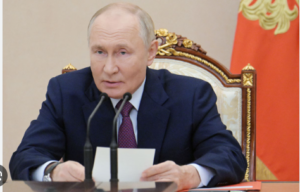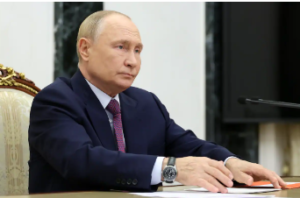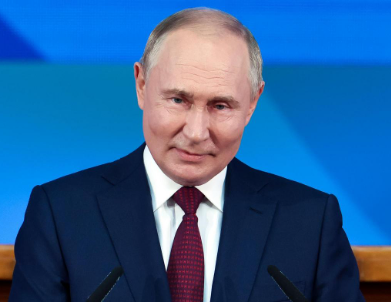Russian President Vladimir Putin has unveiled new guidelines for the use of Russia’s vast nuclear arsenal, significantly reducing the conditions under which the country could resort to nuclear weapons. Speaking at a televised Security Council meeting, Putin declared that a conventional attack against Russia, if supported by a nuclear power, would now be seen as a direct nuclear threat.
The move marks a major shift in Russia’s nuclear doctrine, previously outlined in 2020. The revised policy allows for nuclear retaliation not only in the event of a nuclear strike but also in response to a conventional attack that poses a “critical threat” to Russia’s sovereignty. This ambiguity leaves considerable room for interpretation, heightening global concerns.
A Broader Nuclear Threat
The doctrine’s revision notably coincides with the ongoing Ukraine conflict, as Western nations weigh allowing Ukraine to target Russian military installations. While Putin did not explicitly mention Ukraine, the timing is significant, coming after Ukraine’s recent incursions into Russia’s Kursk region.
Putin’s new stance seems aimed at deterring further Western involvement in Ukraine, signaling to Kyiv’s allies that the stakes could escalate drastically. These changes, he insists, are necessary to address emerging global threats, and reflect Russia’s evolving military strategy.
Tactical Shift or Nuclear Brinkmanship?
Russia’s hawkish factions have long lobbied for a hardline stance, suggesting the former doctrine was too ambiguous. The new guidelines also detail nuclear use in the event of a large-scale air assault involving advanced weaponry such as drones, hypersonic missiles, or cruise missiles. These new specifications suggest an even greater likelihood of nuclear deployment in future conflicts.

Analysts are divided on whether Putin’s statements are strategic bluffs or genuine threats. According to the Institute for the Study of War, Putin’s rhetoric aims to “breathe new life into the Kremlin’s nuclear sabre-rattling,” hoping to generate fear among Western policymakers. RAND political scientist Samuel Charap remarked, “Whether it’s a bluff or not, any lowering of nuclear use conditions by a major power is dangerous.”
A Dangerous Precedent
Putin’s decision also extends Russia’s nuclear umbrella to Belarus, an important ally in the conflict. Belarusian President Alexander Lukashenko has allowed Russian forces toRussian President Vladimir Putin recently proposed significant changes to the nation’s nuclear doctrine, emphasizing more aggressive criteria for deploying nuclear weapons. These changes aim to adapt to evolving global military threats, particularly with the context of Russia’s ongoing conflict with Ukraine.
Putin’s proposal includes the possibility of using nuclear weapons not just in response to nuclear threats but also in the case of conventional military strikes that present a “critical threat” to Russia’s sovereignty. Additionally, any attack on Russia by a non-nuclear state, if supported by a nuclear-armed nation, would now be considered a joint nuclear threat. This shifts the boundaries of how and when Russia might consider nuclear retaliation, creating a broader scope for potential use of its vast arsenal.
These adjustments reflect Moscow’s increasing concern over the involvement of Western nations in Ukraine, especially with Kyiv’s requests to strike Russian territory using advanced, Western-supplied weapons. Putin has emphasized that these changes aim to ensure the “utmost protection” of Russia’s state security and sovereignty, a clear message to both Ukraine and its Western backers. This rhetoric marks a heightened level of nuclear posturing, reminiscent of Cold War deterrence strategies, but with added complexity due to modern military technologies like drones and hypersonic missiles. It further raises concerns about nuclear escalation in an already volatile geopolitical landscape.






